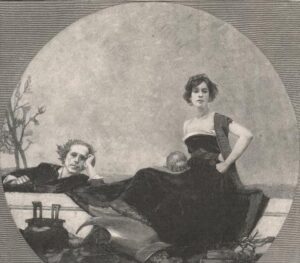
The intricacies of human relationships are often part of our quest for self-realization, the journey to become the best version of ourselves. This doesn’t take place in solitude. Rather, it is deeply intertwined with our interactions with others. This idea is inherent in Swiss psychiatrist Carl Jung’s theory of ‘individuation,’ a process through which an individual becomes more fully ‘oneself.’ According to Jung, this process isn’t simply an exercise in self-contained introspection but a deeply social endeavour.
By utilizing the concept of the enneagram, a model of human personality which is principally understood and taught as a typology of nine interconnected personality types, we can further explore the nuances of individuation and interpersonal relationships. The enneagram offers a lens through which we can recognize and understand the intricate dance of psychological polarities at play within ourselves and our relationships.
This dance often manifests itself most profoundly within romantic relationships, in which we connect and expose our deepest selves to our partner, willingly or not. These connections reveal our shadows, our unresolved issues and potentials for growth. This exposes an interesting facet of the enneagram theory: our unconscious mind may play a critical role in our selection of a life partner. It compels us towards those who, perhaps unbeknownst to us, spark growth within ourselves.
This growth is not always easy or comfortable, often taking the form of conflict. However, this conflict and the resolutions that arise are an integral part of the individuation process. The unconscious, armed with knowledge about our potential for personal growth, nudges us towards partners who can help us confront and resolve our deep-seated issues. In a sense, the conflicts that arise within our relationships serve as wake-up calls, forcing us to confront and work on the aspects of ourselves that need refinement.
Couples therapy often begins with each partner attributing faults to the other. Upon closer examination, however, it often becomes apparent that these so-called faults are merely projections of one’s own unresolved issues. The enneagram can be instrumental in this exploration, offering insights into why we’re drawn to certain personality types and how we can evolve and heal within these relationships.
A multitude of themes come into play within these relationships. From closeness and distance, commitment and isolation, attachment and autonomy, to dependence and independence, these opposing forces create a dynamic tension that can lead to growth. As such, the interplay of these forces can be viewed as an integral part of the individuation process.
Over time, these tensions may polarize, with each partner moving towards opposite ends of the spectrum. This polarization, while challenging, provides an opportunity for growth as it forces both partners to confront and address their shared unconscious themes.
The enneagram can be instrumental in identifying and navigating these themes, guiding both partners towards better understanding and reconciliation. As individuals recognize and accept their projected faults as parts of themselves that need attention and development, they can retract these projections and begin to evolve and grow.
In essence, a relationship provides a unique environment for individuation to take place. It offers a field unlike any other, a crucible for transformation. Through the trials and tribulations of interpersonal relationships, individuals can attain their potential for wholeness, fulfilling the true essence of Jung’s concept of individuation.
Understanding and accepting these dynamics, couples can grow not only as individuals but as a unit as well. This collective growth can create a relationship that is a sum greater than its parts, where partners achieve a profound union without losing their individuality. This concept reflects the essence of Jung’s alchemical metaphor of the “united binary,” in which individual wholeness and authentic relating to the other are both essential elements.
